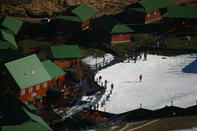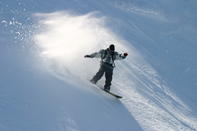Rhodes Village
The folk who decided to set up a little church and village in a crock of the upper Bell River, in the shadow of mighty Ben MacDui (3 001 m) in the Eastern Cape highlands, were clearly men and women before their time. In a marketing masterstroke, they named it after the Cape's fabulously wealthy prime minister and asked him to be their patron.
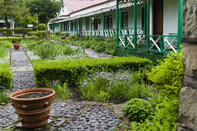
Cecil John Rhodes had his sights set rather further north and so just sent them a bag of acorns - well, actually, he sent them some young oak trees and wished them well.
Rhodes has not flourished as its founders dreamed, but that is precisely its charm. While more a hamlet than a village (the little church has long not heard it’s bell rung), it is ground zero for serious trout fishers in this country. It also gets more snow than any other place in South Africa, so mountaineers and other adventurers love it too. The Rhodes Hotel, with its Victorian architecture and small-town charm, was originally known as The Horseshoe.
The old stone-built school and hostel were designed by the renowned architect Sir Herbert Baker, and accommodated 250 children during the village's heyday. Over the years, though, the population of this once-thriving farming community dwindled; the school was closed in the 1970s when there were only 11 pupils.
Ben MacDui Mountain
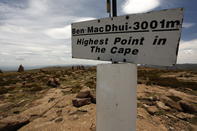
If you don't visit Rhodes for its isolated-village appeal (it's not on the road to anywhere), then let it be for its surrounds. The mighty Ben MacDui (or McDhui) Mountain watches over the dorp and its many rivers and streams that slink off the mountains are laden with trout. The edge-of-the-Drakensberg landscape is open and green in the summer, drizzled with snow during winter. Claim a seat at the local hotel and listen to stories of the village's early days.
Today, Rhodes is a popular winter destination when the slopes of 3 001 m high Ben MacDui (the Eastern Cape Drakensberg's highest point) are covered in snow, creating ideal skiing conditions. July to August in the southern Berg is characterised by heavy snowfalls and this, together with tumbling waterfalls, glinting icicles and waving sub-alpine grass fields, make for fairy tale winters.
Bell River
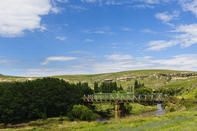
Winter hideaways, fly-fishing and game-bird shooting are the standard fare of the tiny, tucked-away corner of the Eastern Cape near Rhodes Village. But hunt further along the Bell River, downstream of Moshesh's Ford, and you'll find some of the finest rock art: so good in fact that Iziko South African Museum chose these overhangs to chisel out painted panels for public display. Virtually every farm in the district has river-side overhangs with paintings - although many have been terribly neglected and allowed to decline.
Naude's Nek
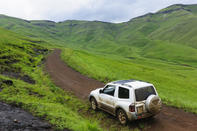
Naude’s Nek between Rhodes and Maclear is the highest pass you can do in any vehicle, or rather one that won’t overheat during the 19 km ascent to 2 623 m. The road to Naude’s Nek Pass was pioneered by two brothers, Stephanus David Naude and Gabriel Naude, in 1896. They followed the winding route on horseback, marked out the road and constructed it using picks, spades and scotch carts. It was completed in 1911.
The two prominent peaks to the north of Naude’s Nek are Ben MacDui (3 001 m) and Cairntoul (2 826 m). The weirdest (or best) thing about Naude’s Nek is the working telephone booth 200 m from the summit, so that you can phone the outside world when you get stuck in the snow.
Tiffindell Ski Resort
The Tiffindell Ski Resort is in close proximity to Rhodes village, and makes for the perfect snowy getaway. In the winter months (July-August) the resort is booming with snowboarders, ski-experts and holidaymakers looking for a snow-filled wonderland escape.
The resort boasts with ski lifts, restaurants, ski shop and ski school offering three months of skiing and snowboarding during June, July and August. Non-aspiring skiers can join in to enjoy a unique experience making snowmen, throwing snow balls or tobogganing, making it the perfect family holiday for young and old.
Tiffindell has an altitude at 2 720 m, nestling snugly on the slope of Ben MacDui (3 001 m). During summertime, tourists can still enjoy a range of activities, such as high altitude hiking, mountain biking, grass skiing, mountain boarding, photography, rock art and birding.
